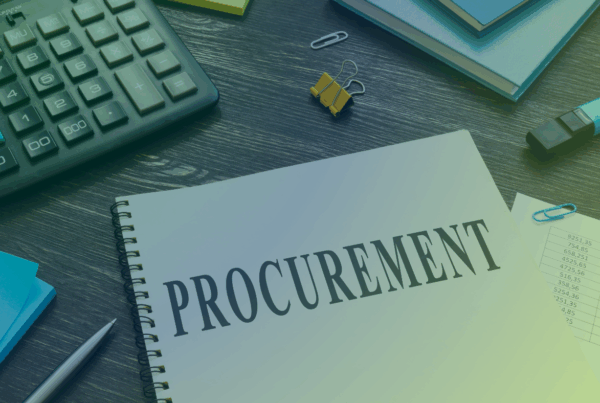As businesses prepare their budgets for 2025, one critical area that often requires closer attention is utility expenses. Utility costs—including electricity, water, heating, and cooling—are necessary to keep your business running smoothly, but they can also be unpredictable and a significant drain on resources if not properly managed. A strategic approach to utility budgeting can help reduce costs, improve energy efficiency, and contribute to your business’s long-term sustainability goals.
Here’s a breakdown of how you can optimize your utility spending and create a more efficient utility budget for 2025.
The first step in crafting an effective utility budget for 2025 is to understand where your money is currently going. A utility audit can help you identify areas of inefficiency and pinpoint where savings can be made.
Start by reviewing your utility bills from the past year. Look for inconsistencies, spikes in usage, or outdated rate structures. Businesses often overpay for utilities because they don’t regularly analyze their billing data. You might uncover opportunities to switch to a more favorable rate plan or identify discrepancies that need correction.
Consider enlisting a third-party auditor to dig deeper into your energy usage, equipment performance, and overall efficiency. These audits can reveal hidden issues that, once addressed, could significantly reduce your utility costs.
-
Leverage Energy-Efficient Upgrades
One of the most effective ways to manage rising utility costs is by investing in energy-efficient technologies. While the upfront costs of upgrading to energy-efficient systems might seem high, the long-term savings are substantial.
- Lighting: Switching to LED lighting can reduce electricity consumption by as much as 75% compared to traditional bulbs. For businesses with extensive lighting needs, this change can dramatically cut utility expenses.
- HVAC Systems: Heating, ventilation, and air conditioning (HVAC) systems are typically some of the largest energy consumers. Consider upgrading to energy-efficient HVAC systems or adding programmable thermostats that allow you to control heating and cooling more effectively.
- Insulation: Improving insulation in your facility can reduce heating and cooling costs by minimizing the loss of hot or cool air. This ensures that your HVAC systems don’t have to work overtime to maintain comfortable temperatures.
To maintain control over your utility costs throughout 2025, it’s crucial to actively monitor your usage in real-time. By implementing smart metering systems, you can track energy consumption and identify patterns or anomalies that may indicate inefficiencies.
With real-time data, you can respond quickly to potential issues such as equipment malfunctions, excessive energy use during off-peak hours, or unexpected spikes in water consumption. This proactive approach enables businesses to make immediate adjustments and avoid unnecessary waste.
Additionally, using energy management software can provide detailed insights into your facility’s energy use, making it easier to spot trends and develop long-term strategies to reduce consumption.
-
Take Advantage of Off-Peak Rates
Many utility providers offer discounted rates for businesses that use energy during off-peak hours. By shifting non-essential energy-intensive tasks, such as production runs or maintenance, to these off-peak times, your business can save significantly on electricity costs.
Review your energy provider’s rate structure and determine if adjusting your operations to align with off-peak periods can offer savings. For some businesses, this may require adjusting work schedules or automating certain processes, but the potential reductions in utility expenses can make these changes worthwhile.
A successful utility budget is not just about reducing costs—it’s about driving long-term efficiency. As you plan your utility expenses for 2025, set clear energy-saving goals for your business. These goals can be as simple as reducing energy consumption by a certain percentage or implementing a specific number of energy-efficient upgrades.
Track progress regularly, using benchmarks from past years to measure success. By establishing these targets and reviewing performance, you’ll create accountability and ensure that energy efficiency remains a top priority throughout the year.
Many governments and utility companies offer rebates, tax incentives, and grants for businesses that invest in energy-efficient upgrades. These programs can significantly offset the initial costs of installing new equipment, upgrading HVAC systems, or improving insulation.
As part of your 2025 utility budgeting strategy, research what incentives are available in your area. Taking advantage of these opportunities can make it easier to justify larger upfront expenses for long-term utility savings.
-
Plan for Unexpected Utility Fluctuations
Utility costs can be unpredictable due to fluctuating energy prices, seasonal demand, and regulatory changes. To protect your business from unexpected spikes in utility expenses, it’s essential to build flexibility into your 2025 budget.
Consider setting aside a portion of your budget for potential increases in utility rates or unusual consumption patterns, such as extreme weather events that lead to higher heating or cooling costs. Having a contingency fund in place will ensure that any unexpected costs don’t throw your entire budget off course.
Looking Ahead to a Utility-Smart 2025
Budgeting for utilities in 2025 doesn’t have to be daunting. By conducting regular audits, investing in energy-efficient technologies, and staying proactive in monitoring your utility usage, your business can take control of utility expenses and achieve greater cost savings.
Building a utility budget that prioritizes efficiency and sustainability not only saves money but also contributes to your organization’s overall environmental goals, helping to reduce your carbon footprint and align with industry best practices. Contact Renodis today for more information on how we can assist you in optimizing your utility management and driving cost savings for 2025 and beyond.






